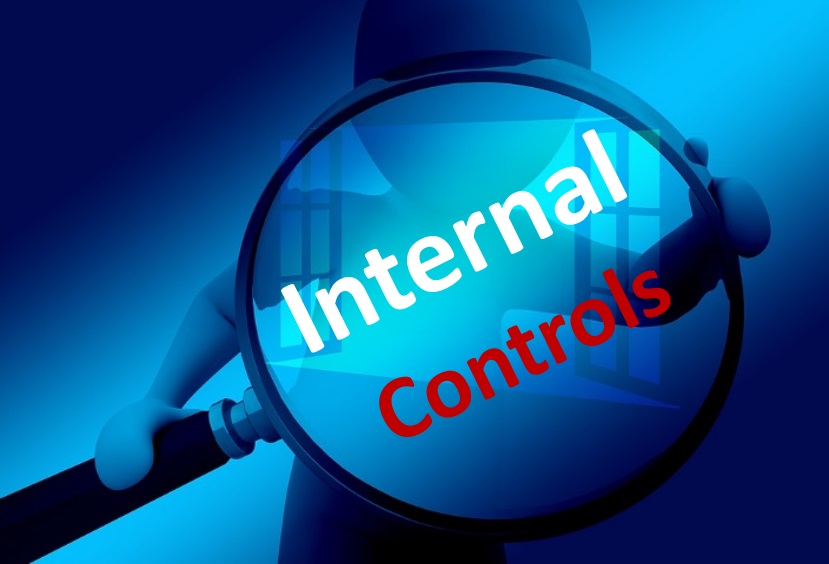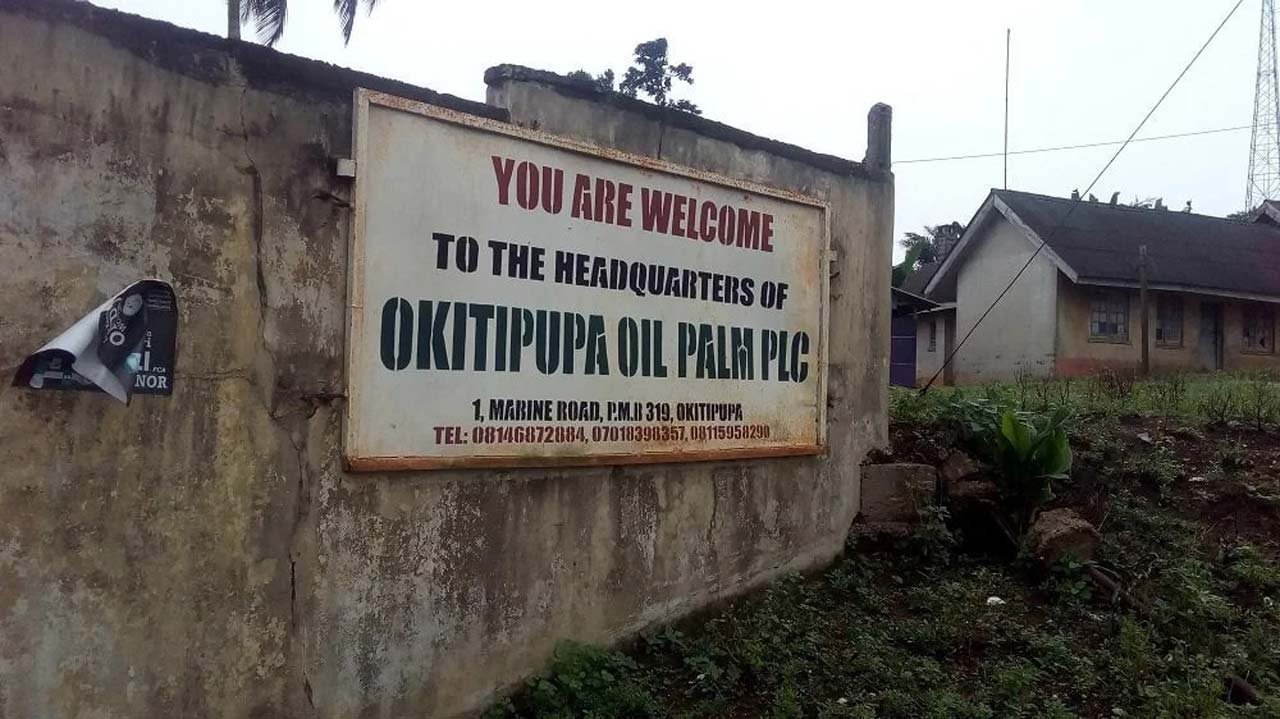Economy
Effective Internal Controls Vital to Investor Protection—SEC

By Aduragbemi Omiyale
The Executive Commissioner for Legal and Enforcement at the Securities and Exchange Commission (SEC), Mr Reginald Karawusa, has stressed that effective internal controls over financial reporting are very vital to ensure companies provide investors with accurate financial statements, which will, in turn, boost investor protection and confidence.
Speaking at a workshop on Internal Controls over Financial Reporting, an implementation of Section -60-63 of the Investment and Securities Act 2007, organised by the SEC in collaboration with the Nigeria Capital Market Institute in Lagos on Monday, Mr Karawusa stated that with the plethora of Ponzi schemes plaguing the nation, accurate financial statements are essential for the vitality of financial markets and by extension the economy.
“Once investors no longer have confidence in the accuracy and completeness of companies’ financial statements and other disclosures, they will naturally be unwilling to invest, and the financial markets will certainly suffer as is currently experiencing in our country,” he said.
The Executive Commissioner noted that following the approval of the framework, it became apparent that its implementation would require extensive improvements in the internal processes of some reporting entities leading to additional responsibilities placed on certain key persons within the entities.
He added that it was decided that efforts would be made to engage with companies and sensitize identified role holders on their responsibilities under the framework.
“As you may recall, the outbreak of accounting scandals in the 1990s and corporate frauds of the early 2000s highlighted the need for the development of a coherent framework of systems of control and policies to identify, measure, mitigate and disclose risks,” he stated.
According to him, “Securities regulators in a number of jurisdictions acted in lockstep with the United States by introducing requirements that would strengthen controls within companies and enhance the quality of financial reports issued by such companies.
“In line with this global effort, the Federal Government provided under Section 61(1) of the Investment and Securities Act 2007 that a public company shall establish a system of internal controls over its financial reporting and security of its assets, and it shall be the responsibility of the board of directors to ensure the integrity of the company’s financial controls and reporting.
“The International Organization of Securities Regulators (IOSCO) has noted that Internal Controls are intended to ensure the fulfilment of corporate goals. They also ensure an efficient deployment of corporate resources and assets, avoiding and mitigating operational deviations that could affect business continuity and the achievement of the company’s goals.
“Some of such boards lacked effective risk and audit committees, where members ought to have challenged management’s approach to risk. These officers neither have the means to ensure that board decisions and policies were effectively put in place, let alone to scrutinize decisions collectively taken,” Mr Karawusa said.
He disclosed that in response particularly to corporate scandals of the 1990s/early 2000s, the United States passed the Sarbanes-Oxley Act of 2002, which introduced significant auditing and financial regulations for public companies as safeguards to protect shareholders, employees and other stakeholders from accounting errors and fraudulent financial practices.
In his remarks, the Managing Director of NCMI, Mr Emomotimi Agama, said that the starting point to evaluate the sufficiency of an ICFR program should be with a financial statement risk assessment.
“The risk assessment, which includes specific financial reporting objectives and identification of risks to achieving those objectives, answers these fundamental questions: Which controls are necessary to address the company’s risks? How many controls does the company need? What is just enough for the company’s ICFR program?
“A risk assessment that integrates the right people, processes, tools, and techniques serves to identify the relevant risks of material misstatement (ROMMs). The risk assessment also includes the selection of controls and the evaluation of the design of the control; it’s through the risk assessment process that a company can report with confidence the number and types of controls necessary to have an effective ICFR system,” Mr Agama stated.
He said the management’s focus on ICFR should start with determining whether the company’s risk assessment process is sufficient to identify and assess the risks to reliable financial reporting, including changes in those risks.
Mr Agama listed proactive steps management can consider, including Refreshing the risk assessment program to incorporate the right people, processes, and technologies to unlock the hidden value. Integrating data analytics and visualization to improve the quality of the data analysed to support robust risk identification and report results succinctly to key stakeholders. This, in turn, can rationalize the risks of material misstatement to a level of granularity to focus on what could truly be a material misstatement.
“In all of this, Education is essential, and the essence of this program is to provide that education to help companies comply with Sec 60-63 of the ISA 2007,” he added.
Economy
FAAC Disburses 1.727trn to FG, States Local Councils in December 2024

By Modupe Gbadeyanka
The federal government, the 36 states of the federation and the 774 local government areas have received N1.727 trillion from the Federal Accounts Allocation Committee (FAAC) for December 2024.
The funds were disbursed to the three tiers of government from the revenue generated by the nation in November 2024.
At the December meeting of FAAC held in Abuja, it was stated that the amount distributed comprised distributable statutory revenue of N455.354 billion, distributable Value Added Tax (VAT) revenue of N585.700 billion, Electronic Money Transfer Levy (EMTL) revenue of N15.046 billion and Exchange Difference revenue of N671.392 billion.
According to a statement signed on Friday by the Director of Press and Public Relations for FAAC, Mr Bawa Mokwa, the money generated last month was about N3.143 trillion, with N103.307 billion used for cost of collection and N1.312 trillion for transfers, interventions and refunds.
It was disclosed that gross statutory revenue of N1.827 trillion was received compared with the N1.336 trillion recorded a month earlier.
The statement said gross revenue of N628.972 billion was available from VAT versus N668.291 billion in the preceding month.
The organisation stated that last month, oil and gas royalty and CET levies recorded significant increases, while excise duty, VAT, import duty, Petroleum Profit Tax (PPT), Companies Income Tax (CIT) and EMTL decreased considerably.
As for the sharing, FAAC disclosed that from the N1.727 trillion, the central government got N581.856 billion, the states received N549.792 billion, the councils took N402.553 billion, while the benefiting states got N193.291 billion as 13 per cent derivation revenue.
From the N585.700 billion VAT earnings, the national government got N87.855 billion, the states received N292.850 billion and the local councils were given N204.995 billion.
Also, from the N455.354 billion distributable statutory revenue, the federal government was given N175.690 billion, the states got N89.113 billion, the local governments had N68.702 billion, and the benefiting states received N121.849 billion as 13 per cent derivation revenue.
In addition, from the N15.046 billion EMTL revenue, FAAC shared N2.257 billion to the federal government, disbursed N7.523 billion to the states and transferred N5.266 billion to the local councils.
Further, from the N671.392 billion Exchange Difference earnings, it gave central government N316.054 billion, the states N160.306 billion, the local government areas N123.590 billion, and the oil-producing states N71.442 billion as 13 per cent derivation revenue.
Economy
Okitipupa Plc, Two Others Lift Unlisted Securities Market by 0.65%

By Adedapo Adesanya
The NASD Over-the-Counter (OTC) Securities Exchange recorded a 0.65 per cent gain on Friday, December 13, boosted by three equities admitted on the trading platform.
On the last trading session of the week, Okitipupa Plc appreciated by N2.70 to settle at N29.74 per share versus Thursday’s closing price of N27.04 per share, FrieslandCampina Wamco Nigeria Plc added N2.49 to end the session at N42.85 per unit compared with the previous day’s N40.36 per unit, and Afriland Properties Plc gained 50 Kobo to close at N16.30 per share, in contrast to the preceding session’s N15.80 per share.
Consequently, the market capitalisation added N6.89 billion to settle at N1.062 trillion compared with the preceding day’s N1.055 trillion and the NASD Unlisted Security Index (NSI) gained 19.66 points to wrap the session at 3,032.16 points compared with 3,012.50 points recorded in the previous session.
Yesterday, the volume of securities traded by investors increased by 171.6 per cent to 1.2 million units from the 447,905 units recorded a day earlier, but the value of shares traded by the market participants declined by 19.3 per cent to N2.4 million from the N3.02 million achieved a day earlier, and the number of deals went down by 14.3 per cent to 18 deals from 21 deals.
At the close of business, Geo-Fluids Plc was the most active stock by volume on a year-to-date basis with a turnover of 1.7 billion units worth N3.9 billion, followed by Okitipupa Plc with the sale of 752.2 million units valued at N7.8 billion, and Afriland Properties Plc with 297.3 million units sold for N5.3 million.
In the same vein, Aradel Holdings Plc remained the most active stock by value on a year-to-date basis with the sale of 108.7 million units for N89.2 billion, trailed by Okitipupa Plc with 752.2 million units valued at N7.8 billion, and Afriland Properties Plc with a turnover of 297.3 million units worth N5.3 billion.
Economy
Naira Trades N1,533/$1 at Official Market, N1,650/$1 at Parallel Market

By Adedapo Adesanya
The Naira appreciated further against the United States Dollar at the Nigerian Autonomous Foreign Exchange Market (NAFEM) by N1.50 or 0.09 per cent to close at N1,533.00/$1 on Friday, December 13 versus the N1,534.50/$1 it was transacted on Thursday.
The local currency has continued to benefit from the Electronic Foreign Exchange Matching System (EFEMS) introduced by the Central Bank of Nigeria (CBN) this month.
The implementation of the forex system comes with diverse implications for all segments of the financial markets that deal with FX, including the rebound in the value of the Naira across markets.
The system instantly reflects data on all FX transactions conducted in the interbank market and approved by the CBN.
Market analysts say the publication of real-time prices and buy-sell orders data from this system has lent support to the Naira in the official market and tackled speculation.
In the official market yesterday, the domestic currency improved its value against the Pound Sterling by N12.58 to wrap the session at N1,942.19/£1 compared with the previous day’s N1,954.77/£1 and against the Euro, it gained N2.44 to close at N1,612.85/€1 versus Thursday’s closing price of N1,610.41/€1.
At the black market, the Nigerian Naira appreciated against the greenback on Friday by N30 to sell for N1,650/$1 compared with the preceding session’s value of N1,680/$1.
Meanwhile, the cryptocurrency market was largely positive as investors banked on recent signals, including fresh support from US President-elect, Mr Donald Trump, as well as interest rate cuts by the European Central Bank (ECB).
Ripple (XRP) added 7.3 per cent to sell at $2.49, Binance Coin (BNB) rose by 3.5 per cent to $728.28, Cardano (ADA) expanded by 2.4 per cent to trade at $1.11, Litecoin (LTC) increased by 2.3 per cent to $122.56, Bitcoin (BTC) gained 1.9 per cent to settle at $101,766.17, Dogecoin (DOGE) jumped by 1.2 per cent to $0.4064, Solana (SOL) soared by 0.7 per cent to $226.15 and Ethereum (ETH) advanced by 0.6 per cent to $3,925.35, while the US Dollar Tether (USDT) and the US Dollar Coin (USDC) remained unchanged at $1.00 each.
-

 Feature/OPED5 years ago
Feature/OPED5 years agoDavos was Different this year
-
Travel/Tourism8 years ago
Lagos Seals Western Lodge Hotel In Ikorodu
-

 Showbiz2 years ago
Showbiz2 years agoEstranged Lover Releases Videos of Empress Njamah Bathing
-

 Banking6 years ago
Banking6 years agoSort Codes of GTBank Branches in Nigeria
-

 Economy2 years ago
Economy2 years agoSubsidy Removal: CNG at N130 Per Litre Cheaper Than Petrol—IPMAN
-

 Banking2 years ago
Banking2 years agoFirst Bank Announces Planned Downtime
-

 Sports2 years ago
Sports2 years agoHighest Paid Nigerian Footballer – How Much Do Nigerian Footballers Earn
-

 Technology4 years ago
Technology4 years agoHow To Link Your MTN, Airtel, Glo, 9mobile Lines to NIN











